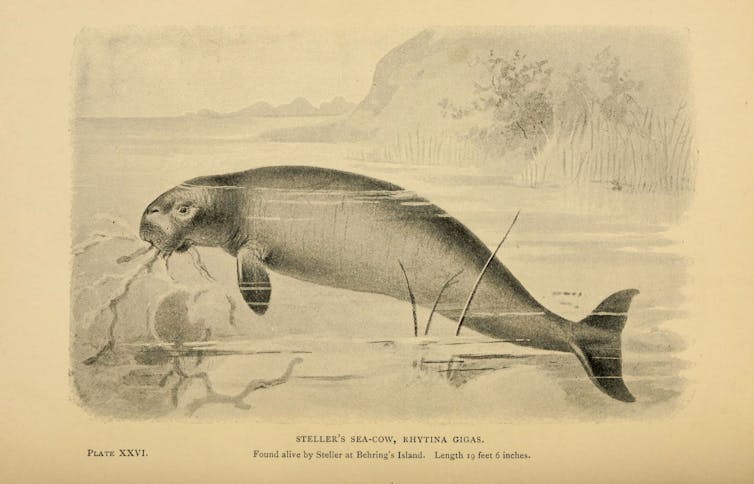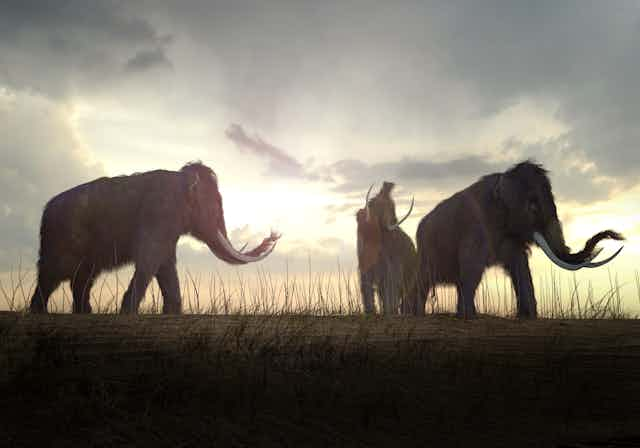The WWF’s new Living Planet report highlights a 58% decline in the abundance of 3,706 animal species since 1970, reinforcing the fear that humanity is bringing about a sixth mass extinction.
The roots of this fear stretch back more than a century, when a series of well-publicised extinctions provided incontrovertible evidence that human actions could wipe out other life forms, even superabundant ones such as the passenger pigeon. These extinctions had a profound influence, and saving species has been a fundamental tenet of conservation ever since.
What is less widely appreciated is that contemporary usage of the term extinction encompasses a wide variety of meanings and applications, each with a distinct role in conservation advocacy. In a 2008 paper we classified several different types of “extinctions” to better understand the rhetorical power of each, and to ask whether they reinforce or undermine conservation communication. Here’s an updated version of our list:
True extinction is well summarised by the IUCN definition that there is “no reasonable doubt that the last individual [of the species] has died”. This category includes many iconic species such as the dodo, passenger pigeon, great auk and Steller’s sea cow. Here, extinction only refers to species that we know of: if not, how could the fate of a last individual be ascertained?

Ecological extinction is where a species only survives in zoos and private collections. The Scimitar oryx, Spix’s macaw and the pheasant-like Alagoas currasow all fall into this category and are classed by the IUCN as “extinct in the wild”.
Local extinction refers to when a species has been wiped out from part of its range. The beaver is a good example. Once common, it had been hunted to extinction in the UK by the 16th century but many people are now working to bring them back.
Wallacean extinction is named after Alfred Russel Wallace, a contemporary of Charles Darwin who independently developed a theory of natural selection. It refers to species that are erroneously classed as extinct due to our ignorance of where they actually live – that is, species that are “lost” rather than extinct. The most famous example is the coelacanth, which was classed as an extinct fossil fish until a living specimen was found in 1938 off the east coast of South Africa. These rediscoveries are a continued source of hope for people trying to find animals like the Tasmanian tiger or the ivory-billed woodpecker.

Linnaean extinctions, named after Carl Linnaeus who invented the system of scientific species names, involve the large discrepancy between the number of species described and the likely number out there. Here, extinctions are extrapolated from the rate of habitat loss for known and undiscovered species. This type of extinction underpins widely used estimates of tens of thousands of extinctions per year.
Lazarus extinction refers to cases where there is still hope of resurrection because DNA of extinct species lives on in domestic breeds and a “replica” species could be recreated though back breeding. De-domestication is a component of European rewilding. Herds of wild cattle resembling the extinct Auroch in looks and ecology are being established in natural areas in the Netherlands, Portugal, Spain, Croatia, the Czech Republic and Romania.

Closely related to Lazarus extinctions is the concept of de-extinction, the idea that advances in synthetic biology will eventually allow us to extract DNA from the preserved remains of extinct species and insert them into the eggs of surrogate animals. An elephant with mammoth-like traits may well be born within the next 20 years.
Some ‘extinctions’ have more impact than others
“Extinction is forever” was a rallying cry of the conservation movement during the 1960s and 1970s. Images of gorillas, tigers and rhino made extinction feel real and meaningful and reminded people of the sense of collective loss and remorse they would feel if these species died out.
Fast forward several decades, and individual species no longer have such an impact. In September 2016, for instance, the death of the last Rabb’s fringed-limbed tree frog passed with little media comment.
Since the 1990s conservation rhetoric has focused on the zoomed-out, planetary-scale Linnaean extinctions. Conservation International’s extinction clock presents the end of a species as a routine and impersonal event happening every 20 minutes. Why should one extinction be newsworthy if more than 26,000 are happening each year?
Nevertheless, it was the spectre of mass extinctions that grabbed the attention of policymakers. While they may not have shed any tears for an individual tree frog species, they rightly feared the loss of economically-valuable ecosystem services. Governments responded with a massive and systematic expansion of protected areas internationally. However, the impact of “sixth mass extinctions” and other doom and gloom rhetoric may be on the wane, especially since the 2007 global economic crisis.

A different tack might be needed: one that repersonalises extinction and balances stories of loss with stories of hope. This could be achieved by bringing local and Lazarus extinctions to the fore. Both of these can be tied to reintroduction projects that offer an optimistic sense that humanity can make amends for the ills it has inflicted on other life forms.
We need to match reports of alarming declines in species with reports analysing places where populations can be restored. The idea that “extinction” is in some cases reversible certainly supports the new practice of ecosystem restoration. If conservation is to regain the initiative it needs to both protect what’s left, and restore what is lost.

